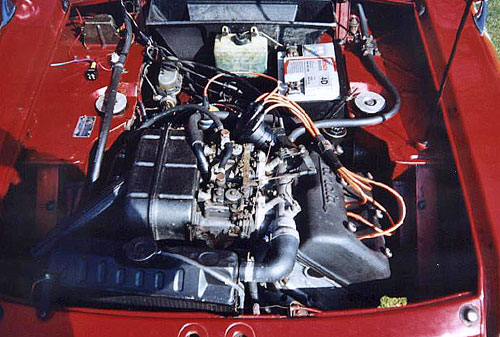FWD Champions:
The Lancia Fulvia Coupe

Well, this is a lovely car. That’s really the only adjective for it.
There are, of course, overtones of the Alfa 1750/2000 GTV, but the ’63-’76 Lancia Fulvia Coupe carves out its own niche. The four-headlight grille treatments of the GTV and Fulvia are similar, but the latter’s profile is much more delicate and lithe-looking, subtly betraying its FWD nature with more visual bias toward the front of the car. Between the pencil-thin C-pillars and the uninterrupted flow of the beltline alone the car’s ethereal flanks, the Fulvia has all the visual substance of one of Tolkien’s elves.

Also like the GTV, the Fulvia has a racing pedigree, winning Lancia’s first (of an eventual 11) International Rally Championship in 1972. Like the Mini Cooper, whose rally success preceded it, the Fulvia’s triumph vindicated the quality of its FWD architecture, coupled with an emphasis on light weight and handling precision over brute power.

The delicacy of the interior matches the exterior as well, with a beautifully functional bank of readable gauges set into a swath of warm wood, and ample space in every direction. Rack and pinion steering is perfectly weighted and accurate, the front wheels connected by wishbones and the rears located by a beam axle and Panhard rod, similar to the later Saab 900‘s setup.

The Fulvia’s engine is somewhat unique: It’s a 1.2-1.6 L, longitudinally-mounted V4 tilted at 45°, sending power to the front wheels via a transaxle mounted to the rear of the engine. The powerplant is similar to the much-later Volkswagen VR6 engine in that a single cylinder head spans the narrow angle between the two banks. In the end, the piston arrangement is as much a staggered inline-4 layout as a V configuration, allowing a measure of compactness in both width and length.
Mechanically and aesthetically, the Fulvia is simply an elegant car, and I imagine that it moves with grace and aplomb befitting its lines. If there was ever a car to convert me to FWD, this is it.
Editor’s note: This post is part of an ongoing series highlighting FWD cars I think highly of, in spite of my overwhelming RWD bias. Read the other installments here:
- Peugeot 205 GTI
- B4 Volkswagen Passat
- Acura Vigor
- Mazda Millenia
- Citroën SM
- Fiat Coupé
- ’91-’96 Infiniti G20
- ’91-’94 B13 Nissan Sentra SE-R
- ’88-’92 Mazda MX-6
- Audi Coupe GT
- Volkswagen Corrado
- Peugeot 405 Mi16
- ’78-’93 Saab 900
- Volvo 850 T-5R
- 5th-generation Honda Prelude
- 1st- and 2nd-generation Volkswagen Scirocco

The design of the Fulvia is honest and clean, but it lacks tumblehome. It, like the Fiesta is good industrial design for a niche, and the driving characteristics were engaging and playful. The Fulvia Zagato is more upscale and also pleasing, without having dated itself. There is, however, one prototype (in yellow) of one of the coach builders that turns this very platform into a world class exotic, losing the diminutive proportions and coming off more like an Alfa TZ2. I will probably find it again shortly and if so will post it on my Facebook page, “Looking Back Racing.” Notice the subtle plug?
Disagree about the Fulvia Zagato—to me, the “glassed-in” nose of that car (shared with many of Zagato’s creations of that era) has dated itself considerably. It looks more butch, to be sure, but less lovely, more…trapezoidal.
In my opinion, the lancia fulvia before fiat took over with all the cut backs is pure Italian magic, inside and out.
I have been fortunate to have owned a 328 Ferrari and 355 along with other sports cars from Germany, the lancia Fulvia 1969 in white with red leather inside I drove today was not as powerful as the others by far, but just made me want to stare at it and drive it for ever. It was like a special rolex watch.it’s a mixture of art, history and workmanship that doesn’t exist anymore.
Marco,
Thanks for commenting! I agree; there really seems to be something special about the Fulvia. You’ve nailed it.